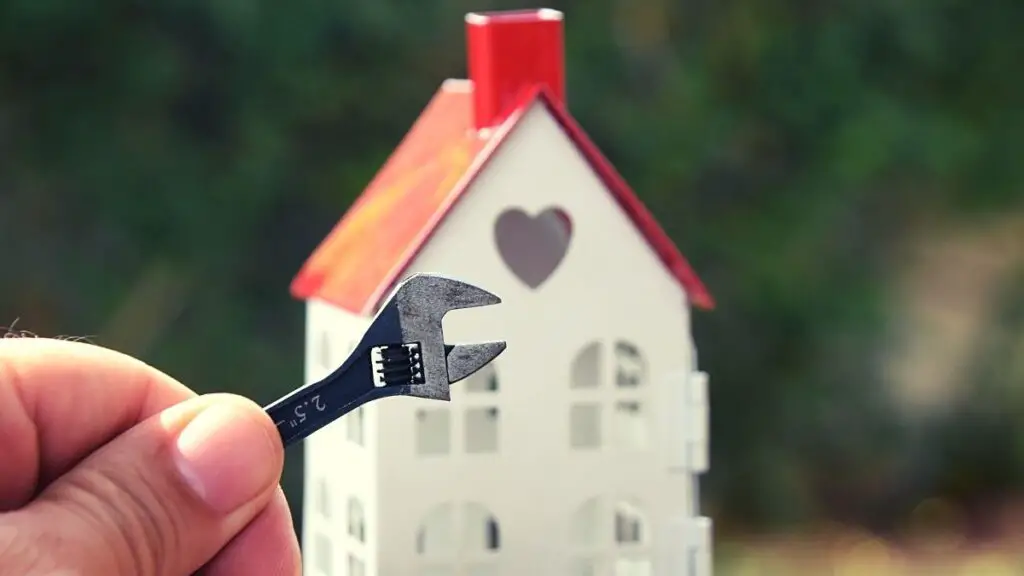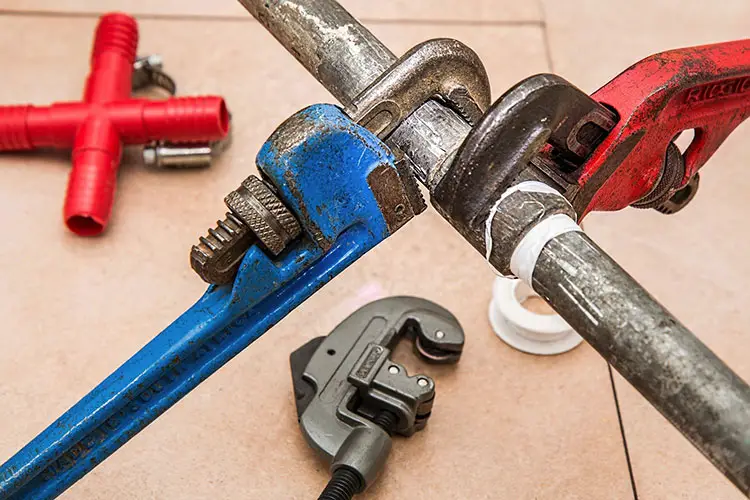After discussing your leaky roof with family at a recent get together, you may have heard somebody raise the topic of the Section 504 home repair program. Maybe you live in a cold climate and you’re wondering how to keep an old home warm, and that requires improvements or upgrades.
Section 504 Home Repair Program is a government program offers money for home repairs to both rural homeowners and seniors on a fixed income who need home repairs they cannot otherwise afford.
Who Manages Section 504?
Section 504 is housed under the umbrella of the United States Department of Agriculture, and specifically, falls under the domain of the USDA Rural Development Department. And while you’ll often hear it simply referred to as Section 504, the technical term for this program is the Single-Family Housing Repair Loans and Grants Program.
Qualifications Necessary to Receive Section 504 Money
Before you ever begin to go through the process of filling out paperwork for Section 504, you need to understand if you’ll even qualify for the money in the first place. It’s an exercise in futility to fill out all the paperwork, collect all the necessary documents, and then find the person you need to submit all that information to only to discover that you never qualified for the program in the first place.
So, if you’re going to consider applying under Section 504, here are some of the basic qualifications you’ll need:
- You must live in a rural area
- You must be a US citizen
- You must be unable to get credit from other lenders
- You must both be the owner of the home you’re requesting aid for, and you must live in the home as well. No rental properties are allowed to qualify.
- You must have an income that falls to less than 50% of what the median income is for others within your area
Section 504 Loans
Of the two options available to you, the Section 504 loan will give you more money for more projects. Whether you’re attempting to fix safety hazards, or you’re needing to make some updates, the loan is going to be the option you’re most likely to qualify for. With this money you can improve the energy efficiency of your home, work on the insulation, or do several other repairs as well (talk with your agent to determine what is and is not acceptable).
This loan has an interest rate of 1% with a repayment period of 20 years. Should you apply for a loan that’s greater than $7500, you’re going to need a full title service as well.
Section 504 Grants
A grant is money that you don’t have to pay back. Thus, Section 504 grants are funds gifted to you in which you never have to think about reimbursement. You use the money, and that’s it.
However, you’re going to be much more limited in what you can do and how much money you can receive if you opt for a Section 504 grant rather than a Section 504 loan.
With a 504 grant, you can only use the money to remove health or safety hazards from your home. If you’re simply attempting to update your kitchen, you’re going to be denied here.
You also need to know that if you sell your home within three years of receiving Section 504 grant money, you’ll be required to repay the grant in full.
How Much Money Can You Get Through Section 504?
There are a number of variables that play into how much money you’ll receive through Section 504, but the chief factor to consider is whether you’re looking at the loan or the grant option.
If you’re looking at the Section 504 loan, you could potentially receive up to $20,000 to work on your home. If you’re looking at the Section 504 grant, the maximum amount of money you could receive to work on your home is $7500.
Additional Section 504 Funds
Sometimes you can combine a Section 504 loan and 504 grant together. The USDA can be choosy with when they permit this and when they do not, but should they approve you for such an amount, you could then qualify for up to $27,500.
In addition, there are some states which grant additional money on top of whatever is given via Section 504. States that give these additional funds are:
California, Hawaii, Illinois, Indiana, Iowa, Kentucky, Maine, Michigan, Mississippi, New Jersey, New Mexico, New York, North Carolina, Oregon, Pennsylvania, South Carolina, Texas, Tennessee, Virginia, Washington, and West Virginia.
You’ll need to contact the State Office for more details on how this works in your state.
What You Can Use Section 504 Money For
Section 504 funding is specifically labeled as funds that’s to be used for home repairs to modernize a home – particularly if these repairs correct an otherwise hazardous situation. A sidewalk with holes that presents a very clear tripping hazard could thus potentially be a project Section 504 funding could be applied to. The same goes for a wiring problem which could result in a house fire.
If you can demonstrate that a problem is potentially dangerous, then you stand a good chance of being ok applying Section 504 funding to it.
- Prior examples of what people have used Section 504 money for include:
- Building another room on your home to accommodate a family member
- Upgrades to accommodate handicapped individuals
- Potentially dangerous structural faults
- Roof repairs
If the project you need worked on could easily fall within those bullet points, you’re probably in luck.
What You Can’t Use Section 504 Money For
Section 504 is very specific with what you can and cannot use the money for. If any of the below are features around your house that you want to be worked on, just know that you’re not going to be able to use Section 504 funds for such.
Any attempts to list that this is what you want the money for in your application will be met with a swift denial. Should you use Section 504 funds for any of the below without your assigned agent’s notification, you will end up in a mess of trouble.
So, if you’re given Section 504 funding, don’t use it for any of the following:
- Work on your landscaping
- To build a new deck (though dangerous decks can be repaired)
- To pay off any bills you collected before the application for Section 504 funds was approved
- To assist in the construction of a new dwelling
- To make repairs to a home that is so run down it will still be considered hazardous even after Section 504 funded repairs have been made to it.
- To move a mobile home from one location to another
- To install driveways
Keep in mind this is not a conclusive list of projects which do not qualify for Section 504 funding. Get in touch with your local USDA office for a comprehensive listing of what does and does not apply in your specific situation.
How Are You Reimbursed Under Section 504?
You have two options for reimbursement under Section 504, but neither of them takes place until after the work is completed.
The first option you can take is to have one lump sum given to you once all construction is finished. This is the preferred method the USDA likes to use. The second option is to pay with multiple advances throughout the life of the project. These advances are capped at 60% of the total project cost.
This route is a bit more complicated, and requires a lot of coordination, which can inherently be more confusing/frustrating.
Is There a Deadline to Apply for Section 504 Funds?
Nope, Section 504 funding is available year-round, so there is no deadline that you need to apply for the funds. You simply complete the paperwork and application process whenever you choose to.
Are Some People Given Priority Over Others?
Yes, some homes are given priority with Section 504 funding over others. Many people use this money to help cover repairs needed due to natural disasters, and as a result, these people are given priority access to funds compared to others.
The USDA uses a four-tier process to sift out who they give money to first. That tier system looks as follows:
- Those affected by natural disasters, without heat, with a failed septic system, or with obvious health and safety issues
- Those needing removal of other health and safety issues
- Subsequent applications by a current borrower
- All other requests
Are Inspectors Required to Check My Work?
Yes, if you receive Section 504 funding, you’ll have to have a properly licensed inspector show up to your property to approve the construction you’ve had completed. Thus, all repairs are going to have to be up to code. If you use the money to fix the project yourself and the repair is not up to code after you’ve spent all of your Section 504 funding, you’re going to be responsible for the cost, and there could potentially be other negative consequences with the USDA as well.
The USDA also notes that the number and type of inspections you need done for whatever construction projects you have being accomplished varies depending on locale and project type. So make sure you are thoroughly aware of what is required of you for the project you want to complete within your locality as you proceed with the process of getting your repairs done.
After your work is completed, you’ll then need to get form RD 1924-12, the Certificate of Contractors Release, completed so that you can seek reimbursement for the projects you had completed.
What Are the Next Steps if You Want to Apply?
If you’ve given the above material and your own situation more than a cursory glance, think the Section 504 funding would be something you qualify for, and want to move forward with the process, here is what you’re going to need to do:
1. Check to See Your Home Qualifies
First, you want to have a better idea of whether you’re actually going to qualify for the program before you get all of your paperwork in order. To do so, click on this link HERE to see if your home is listed as a qualifying home for the program. If the link says you’re approved, you stand a much better chance of facing less future frustration.
However, just keep in mind that this link isn’t a guarantee of eligibility. It simply gives you something of a ballpark idea as to whether it’s worth your time to continue on with the application process. Should you deem the work to be worth your while, here is what you need to do next…
2. Fill Out the Necessary Prerequisite Paperwork
Click the below links and print out these forms. You’re going to need each of them to be filled out to continue on. Without these forms already filled out, you’re going to end up making a call to a government office (with the hold times that typically entails) only to be told ‘fill out the forms’.
So fill these out first, and then proceed to the next step.
- Uniform Residential Loan Application (RD 410-4):
- Request for Information (RD 3550-1):
- Employment and Asset Certification (RD 3550-4):
- Get together anything else listed in THIS checklist
3. Contact Your Local Agent
Now that you have all of your paperwork in order, you’re going to want to talk with somebody at the USDA that works with Section 504. There are people for such within every state. To find the way to contact one near you, click on THIS link and enter the appropriate information.
Once you’re on the phone with your agent, you’ll be given instructions on everything you need to do from that point forward.
Final Thoughts
If you’re looking for the means to update your house, Section 504 funding is a potential option that’s out there. However, you’re going to want to make sure that you not only know if you qualify before you ever submit your application, but you’re also going to want to ensure you are using your funds correctly.
Using government-issued funds in an incorrect manner can quickly turn into a financial nightmare you’re best off avoiding entirely. If you are doing what you’re supposed to with this money though, this can be a low cost/free way of getting the repairs done around your home you’ve been considering for quite some time now. What are your thoughts on Section 504? Have you used the funds in the past? What was your experience like? Let us know in the comments below!
References:
Source: https://lawguideline.org/section-504-home-repair-program/
Source: https://www.rd.usda.gov/files/3550-1chapter12.pdf




